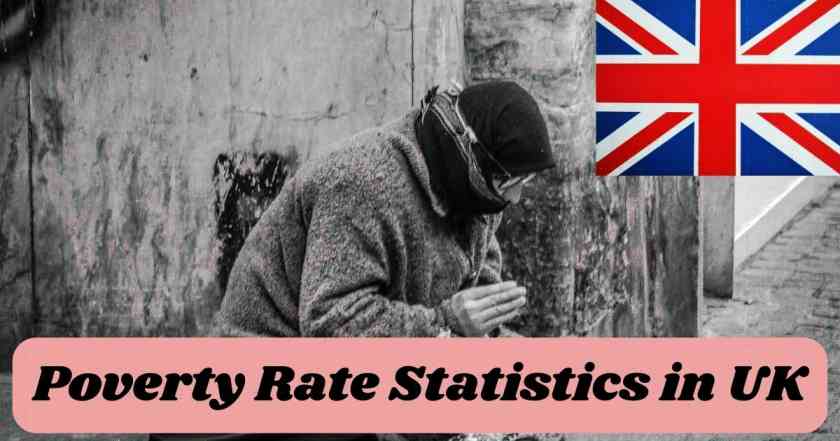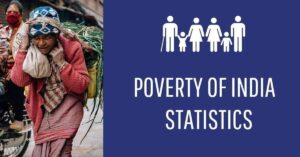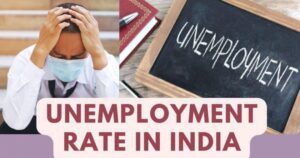Poverty refers to the condition where individuals and families lack sufficient income to meet basic needs, such as food, housing, and clothing. Contributing factors include economic inequality, unemployment, and rising living costs, resulting in significant disparities in living conditions and access to essential resources.
Poverty in UK
Poverty in the UK is a significant and complex issue, affecting millions of individuals and families across the nation. Despite being one of the wealthiest countries globally, the UK grapples with substantial disparities in income and living conditions. Factors such as economic inequality, unemployment, low wages, and rising living costs contribute to the prevalence of poverty. This situation not only impacts the immediate well-being of those affected but also has long-term implications for health, education, and social mobility.
Addressing poverty in the UK requires a multifaceted approach involving economic reforms, social policies, and community support initiatives. Government intervention through welfare programs, affordable housing projects, and job creation schemes is crucial in mitigating the effects of poverty. Additionally, collaboration between public, private, and voluntary sectors can enhance support for vulnerable populations. Reducing poverty and its associated hardships is essential for fostering a more equitable and prosperous society, ensuring that everyone has the opportunity to thrive and contribute to the nation’s future.
Poverty Rate in UK (Percentage)
| Indicator | Statistics | Total UK Population in Poverty |
|---|---|---|
| Poverty Rate in UK | 18% of the population | 12 million |
- As of the latest data from 2022-2023, the absolute poverty rate in the UK stands at 18% which is equivalent to 12 million people. This reflects the proportion of the population living in absolute poverty after accounting for housing costs.
- The poverty rate for the United Kingdom according to World Bank data for 2017 was 18.6%.
Poverty Statistics in UK
| Indicator | Statistics |
|---|---|
| Absolute Poverty Rate | 18% of the population, equivalent to 12 million people |
| Children in Absolute Poverty | A quarter of children are in absolute poverty |
| Increase in Absolute Poverty | Rose by 600,000 people due to energy price crisis |
| Government Intervention | Cost of Living payments prevented 1.3 million people from poverty |
| Impact on Pensioners | Absolute poverty among pensioners remained low |
| Food Insecurity | Increased from 8% to 11% of individuals |
| Heating Inadequacy | More than doubled, from 4% to 11% unable to heat their homes |
| Food Bank Usage | Rose from 0.9% to 1.5% of the population |
- Absolute Poverty Rate (18% of the population, equivalent to 12 million people):
- This statistic indicates that 18% of the UK population, which translates to approximately 12 million individuals, are living in absolute poverty. Absolute poverty is defined as not having enough income to afford a basic standard of living, adjusted for housing costs.
- Children in Absolute Poverty (A quarter of children):
- Roughly 25% of children in the UK are living in absolute poverty. This means that one in four children do not have enough resources to meet basic needs like adequate nutrition, clothing, and shelter.
- Increase in Absolute Poverty (Rose by 600,000 people due to energy price crisis):
- Absolute poverty increased by 600,000 people during the period due to a significant rise in energy prices following geopolitical events such as Russia’s invasion of Ukraine. This increase highlights how external economic shocks can impact household finances and exacerbate poverty rates.
- Government Intervention (Cost of Living payments prevented 1.3 million people from poverty):
- The UK government implemented Cost of Living payments, which helped prevent approximately 1.3 million people from falling into poverty. These payments are part of a broader strategy to support households facing financial hardship due to economic challenges.
- Impact on Pensioners (Absolute poverty among pensioners remained low):
- Despite overall increases in poverty rates, absolute poverty among pensioners (elderly individuals receiving pensions) remained relatively stable and low compared to other demographic groups. This stability is often attributed to specific support measures targeting pensioners.
- Food Insecurity (Increased from 8% to 11% of individuals):
- Food insecurity, defined as the inability to access sufficient and nutritious food, rose from 8% to 11% among individuals. This indicates a worsening of food affordability and access for a significant portion of the population.
- Heating Inadequacy (More than doubled, from 4% to 11% unable to heat their homes):
- The proportion of individuals unable to adequately heat their homes more than doubled, increasing from 4% to 11%. This suggests that a growing number of households are facing challenges in affording basic utilities, particularly heating during colder months.
- Food Bank Usage (Rose from 0.9% to 1.5% of the population):
- The percentage of the population using food banks increased from 0.9% to 1.5%. Food bank usage is often seen as a critical indicator of severe financial hardship and food insecurity among vulnerable groups.
Insights:
- Energy Price Crisis Impact: The table underscores how external economic shocks, such as energy price increases, can significantly impact household finances and exacerbate poverty rates.
- Government Support: The data highlights the importance of government interventions, such as Cost of Living payments, in mitigating the increase in poverty and supporting vulnerable households.
- Child Poverty Concerns: The sharp rise in child poverty rates indicates a pressing need for targeted policies and support mechanisms to protect children from the long-term impacts of poverty.
- Living Standards: Indicators like food insecurity and heating inadequacy reflect broader challenges in maintaining basic living standards for a growing number of individuals and families in the UK.

Child Poverty Statistics in UK
| Indicator | Statistics |
|---|---|
| Children in Absolute Poverty | Approximately 3.6 million children were in absolute poverty, accounting for 30% of all children. |
| Increase in Child Poverty | About 300,000 more children fell into absolute poverty during the cost of living crisis. |
| Deep Child Poverty | An estimated 2.9 million children were in deep poverty, with incomes at least 50% below the poverty line. |
| Working Families | 69% of children in poverty lived in families where at least one parent worked. |
| Lone-Parent Families | 44% of children in lone-parent families were in poverty. |
| Material Hardship among Pensioners | 8% of pensioners struggled with regular meals, essential bills, or heating, up 2 percentage points from the previous year. |
- Children in Absolute Poverty (Approximately 3.6 million):
- Absolute poverty refers to not having enough income to afford basic necessities like food, clothing, and shelter. In 2022-2023, approximately 3.6 million children in the UK were living in absolute poverty. This represents a significant portion of the child population, indicating widespread economic hardship among families.
- Increase in Child Poverty (About 300,000 more children):
- During the height of the cost of living crisis, an additional 300,000 children fell into absolute poverty. This increase underscores the impact of economic factors such as inflation and rising living costs on household finances, particularly affecting vulnerable families.
- Deep Child Poverty (Estimated 2.9 million children):
- Deep poverty refers to children living in households where income is at least 50% below the poverty line. In 2022-2023, an estimated 2.9 million children experienced deep poverty, highlighting severe financial constraints faced by these families.
- Working Families (69% in poverty with at least one working parent):
- Despite having at least one parent employed, 69% of children in poverty came from working families. This statistic reveals challenges such as low wages, precarious employment, and insufficient support systems for working parents.
- Lone-Parent Families (44% in poverty):
- Among lone-parent families, 44% of children were living in poverty. Single-parent households often face higher financial pressures due to sole income earners and limited access to support networks.
- Material Hardship among Pensioners (8% facing hardship):
- While the focus is on child poverty, it’s notable that 8% of pensioners struggled with regular meals, essential bills, or heating. This indicates broader challenges in maintaining a decent standard of living among elderly individuals, despite pension incomes.
Insights:
- Impact of Economic Crises: The cost of living crisis exacerbated child poverty, pushing more children into absolute poverty despite government interventions like Cost of Living payments.
- Employment and Poverty: The majority of children in poverty live in households where at least one parent works, highlighting the complexity of poverty dynamics even with employment.
- Policy Considerations: There are calls for policy reforms, including adjustments to benefit rates and reconsideration of policies like the two-child limit, to better support vulnerable families and alleviate child poverty.
These insights provide a comprehensive view of the challenges facing children and families in poverty in the UK, emphasizing the need for targeted policies and support mechanisms to address underlying economic vulnerabilities and improve outcomes for children.
Disclaimer: The data research report we present here is based on information found from various sources. We are not liable for any financial loss, errors, or damages of any kind that may result from the use of the information herein. We acknowledge that though we try to report accurately, we cannot verify the absolute facts of everything that has been represented.








